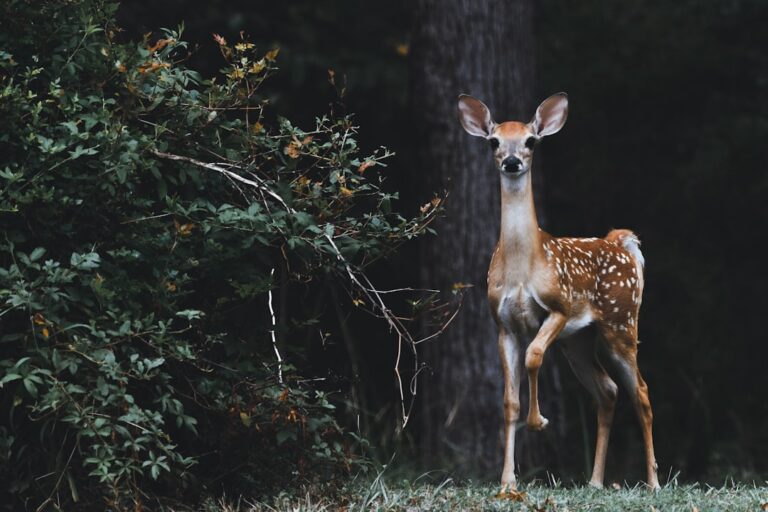Animal behavior is a fascinating field of study that encompasses the myriad ways in which animals interact with their environment, other species, and each other. This discipline draws from various scientific domains, including ethology, ecology, psychology, and evolutionary biology, to understand the underlying mechanisms that drive behavior. The study of animal behavior is not merely an academic pursuit; it has profound implications for conservation efforts, animal welfare, and our understanding of the evolutionary processes that shape life on Earth.
By observing and analyzing behaviors, researchers can glean insights into the survival strategies of different species, their social structures, and their adaptations to changing environments. The complexity of animal behavior is evident in the vast array of actions exhibited by different species. From the intricate courtship rituals of birds to the sophisticated hunting techniques of predators, behaviors are often finely tuned to meet the demands of survival and reproduction.
Moreover, these behaviors can be influenced by a variety of factors, including genetics, environmental conditions, and social interactions. As we delve deeper into the various aspects of animal behavior, we will uncover the rich tapestry of life that illustrates how animals navigate their worlds and interact with one another.
Key Takeaways
- Animal behavior encompasses a wide range of activities and interactions that animals engage in to survive and reproduce.
- Communication and social interactions play a crucial role in the survival and success of many animal species, from mating rituals to establishing dominance within a group.
- Foraging and feeding behavior are essential for animals to obtain the necessary nutrients and energy for survival, and can vary greatly depending on the species and its environment.
- Reproductive strategies and mating behavior can be highly complex and diverse, with different species exhibiting a wide range of courtship rituals and mating systems.
- Territoriality and aggression are common behaviors in the animal kingdom, as individuals compete for resources and establish boundaries within their environment.
Communication and Social Interactions
Communication among animals is a critical component of their social interactions and plays a vital role in survival. Animals utilize a diverse array of signals to convey information, ranging from vocalizations and body language to chemical signals and visual displays. For instance, the complex songs of birds serve not only to attract mates but also to establish territory and communicate with other individuals.
In many species, such as wolves and elephants, vocalizations are integral to maintaining social bonds within groups. These sounds can convey emotions, alert others to danger, or coordinate group activities like hunting or migration. In addition to vocal communication, many animals rely on non-verbal cues to express themselves.
For example, the elaborate dances of honeybees communicate the location of food sources to other members of the hive. Similarly, the posturing and facial expressions of primates can indicate aggression, submission, or social bonding. Chemical communication is also prevalent in the animal kingdom; pheromones released by insects can signal reproductive readiness or mark territory.
The interplay between these various forms of communication highlights the complexity of social interactions in the animal world and underscores the importance of understanding these behaviors in the context of ecological relationships.
Foraging and Feeding Behavior

Foraging behavior is a critical aspect of animal life that directly impacts survival and reproductive success. Animals have evolved a variety of strategies to locate and acquire food, which can vary significantly depending on their ecological niche. For instance, predators like lions employ cooperative hunting techniques to take down larger prey, while scavengers such as vultures rely on keen eyesight to locate carrion from great distances.
The foraging strategies employed by herbivores can also be quite diverse; some species may graze continuously on grasslands, while others may selectively browse on specific plants based on nutritional content. The decision-making processes involved in foraging are influenced by numerous factors, including food availability, competition with other species, and environmental conditions. For example, studies have shown that certain bird species exhibit optimal foraging theory, where they maximize their energy intake while minimizing energy expenditure during foraging activities.
This theory posits that animals will choose food sources based on their profitability—balancing the energy gained from food against the energy spent in locating and consuming it. Such strategies are not only crucial for individual survival but also play a significant role in shaping community dynamics within ecosystems.
Reproductive Strategies and Mating Behavior
| Species | Mating System | Reproductive Strategy |
|---|---|---|
| Humans | Monogamy, Polygamy | Internal fertilization, live birth |
| Lions | Polygyny | Mating season, dominant male mates with multiple females |
| Bonobos | Promiscuity | Sexual activity used for social bonding |
| Penguins | Monogamy | Both parents share incubation and chick rearing |
Reproductive strategies are fundamental to the continuation of species and exhibit remarkable diversity across the animal kingdom. These strategies can be broadly categorized into two main types: r-strategy and K-strategy. R-strategists, such as many fish species, produce large numbers of offspring with little parental investment, relying on sheer numbers to ensure that some survive to adulthood.
In contrast, K-strategists like elephants invest significant time and resources into raising fewer offspring, ensuring that they have a higher chance of survival in a competitive environment. Mating behaviors are equally varied and often involve complex rituals designed to attract mates and ensure reproductive success. For example, male peacocks display their extravagant tail feathers in a courtship dance that showcases their genetic fitness to potential female partners.
In many species, such as frogs and insects, vocalizations play a crucial role in attracting mates; males often call out to females during specific breeding seasons. Additionally, some species engage in elaborate displays or gift-giving behaviors as part of their courtship rituals. These behaviors not only serve to attract mates but also help establish dominance hierarchies within populations.
Territoriality and Aggression
Territoriality is a common behavior observed in many animal species and serves as a mechanism for resource allocation and mate selection. By establishing territories, animals can secure access to vital resources such as food, nesting sites, and mates while minimizing competition with others. Territorial behaviors can manifest in various forms, including vocalizations, scent marking, and physical displays of aggression.
For instance, male songbirds often sing from prominent perches to announce their presence and deter intruders from encroaching on their territory. Aggression is closely linked to territoriality and can arise from competition for resources or mates. In many species, aggressive encounters are ritualized to minimize injury; for example, deer engage in antler wrestling during mating season to establish dominance without causing serious harm.
However, aggression can escalate into violent confrontations when resources are scarce or when individuals feel threatened. Understanding the dynamics of territoriality and aggression is essential for comprehending population dynamics within ecosystems and the impact of environmental changes on animal behavior.
Migration and Navigation

Migration is a remarkable behavioral phenomenon observed in numerous animal species as they travel long distances in search of food, breeding grounds, or more favorable environmental conditions. This behavior is particularly evident in birds; for instance, the Arctic Tern undertakes an annual migration spanning over 70,000 kilometers between its breeding grounds in the Arctic and wintering sites in Antarctica. Such migrations are often timed with seasonal changes in food availability and climate conditions.
The navigation abilities exhibited by migratory animals are equally impressive and involve a combination of innate instincts and learned behaviors. Many species utilize celestial cues such as the position of the sun or stars for orientation during migration. Others may rely on Earth’s magnetic field or landmarks within their environment to guide their journey.
Recent studies have revealed that some migratory birds possess specialized cells containing magnetite that allow them to detect magnetic fields. Understanding these navigation mechanisms not only sheds light on animal behavior but also raises important questions about how environmental changes may impact migratory patterns.
Learning and Cognitive Abilities
Learning plays a crucial role in shaping animal behavior and enhancing survival prospects within dynamic environments. Many species exhibit remarkable cognitive abilities that allow them to adapt their behaviors based on past experiences or social learning from others. For example, studies have shown that certain primates can use tools to obtain food—a behavior that requires both problem-solving skills and an understanding of cause-and-effect relationships.
Social learning is particularly significant in species with complex social structures. Dolphins are known for their ability to learn new behaviors by observing others within their pods; this includes hunting techniques or vocalizations unique to specific groups. Similarly, young elephants learn essential survival skills by mimicking older individuals within their herds.
The capacity for learning not only enriches individual lives but also contributes to cultural transmission within populations—an aspect that highlights the intricate connections between behavior, environment, and social dynamics.
Human Impact on Animal Behavior
Human activities have profoundly influenced animal behavior across the globe, often with detrimental effects on wildlife populations and ecosystems. Habitat destruction due to urbanization, agriculture, and deforestation has forced many species to adapt their behaviors in response to changing environments. For instance, urban-dwelling animals may alter their foraging patterns or become more nocturnal to avoid human activity during daylight hours.
Additionally, pollution and climate change have introduced new challenges that affect animal behavior on multiple levels. Changes in temperature can disrupt migration patterns or breeding cycles; for example, some bird species may arrive at breeding grounds too early due to unseasonably warm weather, leading to mismatches between hatching times and food availability. Furthermore, human-induced noise pollution can interfere with communication among animals—particularly those that rely heavily on vocalizations for mating or territory establishment.
The impact of human activities extends beyond immediate behavioral changes; it also raises ethical considerations regarding conservation efforts and animal welfare. As we continue to encroach upon natural habitats, understanding how our actions influence animal behavior becomes increasingly critical for developing effective conservation strategies aimed at preserving biodiversity and ensuring the survival of vulnerable species in an ever-changing world.












